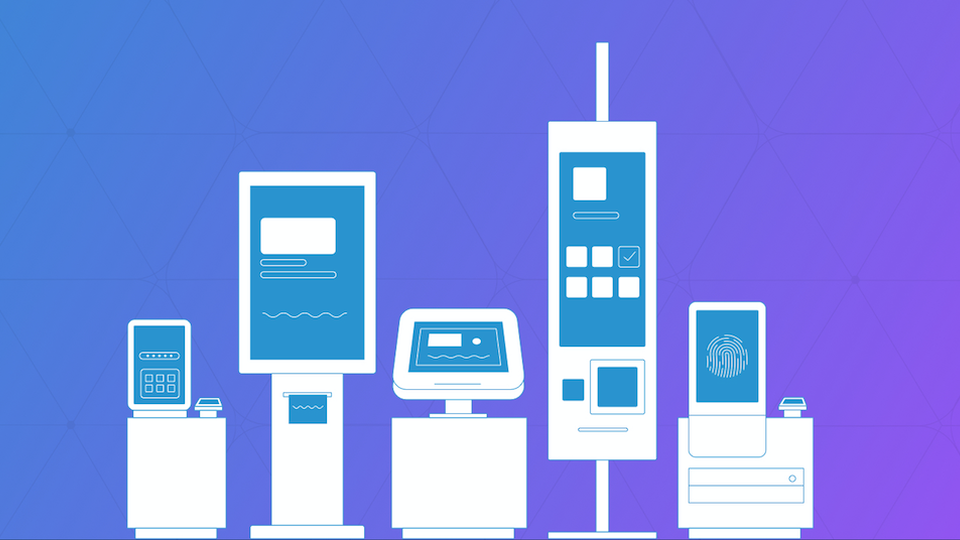Commentary
Considerations for selecting kiosks and securing deployments
Self-service kiosks for enterprise use require the right hardware configuration, scalable software platform and security features.

February 25, 2019
 |
Shiv Sundar is founder and CEO of Shoonya, a connected device platform that provides purpose built devices. |
By Shiv Sundar
Enterprises are increasingly adopting self-service solutions to meet their business needs. Thousands of kiosk units are deployed every year in hospitality, healthcare, retail and other sectors. They are also quite complex owing to the range of functionalities they offer.
Successful kiosks boost business growth, generating revenues, bringing down costs and simplifying customer experience.
Consumer tablets?
Choosing a consumer tablet to build your kiosk solution has its pitfalls. It is not practical for a tablet that is designed for a single user usage to be put in an environment where hundreds of people interact with it on a daily basis and is continuously "on." Secondly, tablets of this kind cannot be mounted directly on a stand and require a protective case or enclosure that adds to the cost and changes the aesthetics. Thirdly, consumer tablets come with a very limited number of ports, if at all, which hinders the use of peripheral devices if your business happens to need them.
Selecting hardware and software
End customers should pay detailed attention to what’s underneath the hood of kiosks. For an extended life cycle of the kiosk, careful attention should be paid to ensure that the kiosks are built on top of the latest chipset, good memory configuration and running the latest operating system.
Selecting I/O devices should be carefully considered. Ensuring that all of them are industrial quality is a must as it affects the functioning of the kiosk as a whole.
While adding, modifying and improving kiosk applications are easy enough, adding and changing devices post-implementation is a big problem. Implementing I/O devices that match your goal and needs is primary to satisfy the aim you have in mind.
Managing post deployment
Significant operational and support challenges exist once kiosks have been deployed in the field. Oftentimes the kiosk is non-functional due to application, battery or connectivity issues leading to unnecessary downtime. One of the key features of effective management is to remotely configure, manage and troubleshoot kiosks. End customers deploying kiosks should ensure that a kiosk software solution can monitor devices remotely and identify failures before they occur.
Securing kiosks
Running on an outdated operating system where security patches are not applied is the top reason why kiosks are made vulnerable. When unauthorized people start accessing security components of kiosks, breaches become more likely.
Application based kiosk software is much more secure than a browser based solutions. The application runs in their own virtual environment and can be monitored for permissions, memory access and crashes. Browser based solutions are prone to phishing attacks, URL spoofing, drive-by downloads, clickjacking, plug-In- and script-enabled attacks, "malvertising" and more.
Enterprises can eliminate weak points by implementing lockdown from the hardware and software levels. Only I/O ports that need access should be enabled from the cloud. Additionally, the kiosk end user should not be able to install or modify any setting on the device. Application, content and policies should always be deployed from the cloud and they should stay active even if the device loses connectivity.
Rise of Android kiosks
Android OS has increasingly added enterprise and security related features. Android 9.0 has offered a lot of features to support kiosk mode. Additionally, Android offers great customization opportunities that enable hardware manufacturers to build highly efficient and performance purpose built devices. Google releases monthly security patches and it is extremely critical that kiosk devices are protected against known vulnerabilities.
Kiosks deployed in secure locations such as banks and airports can add additional hardware based security features by implementing "root of trust," which involves a series of strict checks, making attacks less effective. The process goes like this:
1. A trusted execution environment is provided by the protective hardware.
2. One or more cryptogenic functions are performed.
3. Throughout the entire runtime, tamper protection will be present.
This further solidifies kiosk protection by enabling them to securely and uniquely identify and authenticate themselves by creating secure channels for service deployment and remote device management.
With the right hardware configuration, scalable software platform and security features, kiosks can offer significant operational efficiency and revenue for enterprises.





